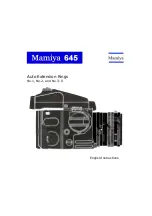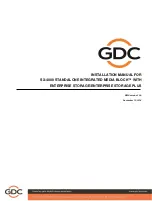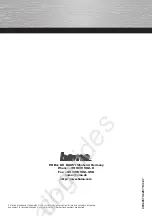
Please note that changes or modifications not expressly approved by the party responsible for compliance could void the user’s authority to operate the equipment.
NOTE: This equipment has been tested and found to comply with the limits for a Class B digital device, pursuant to Part 15 of the FCC Rules. These limits are designed to
provide reasonable protection against harmful interference in a residential installation. This equipment generates, uses and radiate radio frequency energy and, if not
installed and used in accordance with the instructions, may cause harmful interference to radio communications. However, there is no guarantee that interference will not
occur in a particular installation. If this equipment does cause harmful interference to radio or television reception, which can be determined by turning the equipment off
and on, the user is encouraged to try to connect the interference by one or more of the following measures: -- Reorient or relocate the receiving antenna. -- Increase the
separation between the equipment and receiver. -- Connect the equipment into an outlet on a circuit different from that to which the receiver is connected. -- Consult the
dealer or an experienced radio/TV technician for help.
Minimum Instructions for Use for Portable Power Banks:
a) The power bank will generate heat when charging. Always charge in a well-ventilated area. Do not charge under pillows, blankets or on flammable surfaces.
b) Keep the power bank away from heat sources, direct sunlight, combustible gas, humidity, water or other liquids.
c) Do not disassemble, open, microwave, incinerate, paint or insert foreign objects into the power bank.
d) Do not subject the power bank to mechanical shock such as crushing, bending, puncturing or shredding. Avoid dropping or placing heavy object on the power bank.
e) Do not short-circuit the power bank or store it in a receptacle where it may be short-circuited by other metallic or conductive objects.
f) Do not operate the power bank if it has been wet or otherwise damaged, to prevent against electric shock, explosion and/or injury. Contact the dealer or authorized agent.
g) Power bank usage by children should be supervised.
h) Please read the operating instructions (including charging instructions and information on the minimum and maximum operating temperatures), supplied with this power bank.
Important safety instructions
Please read and follow these instructions carefully and retain for your records.
Please read all warnings for your safety and optimal user experience.
1. Never leave a charging battery unattended.
2. Do not expose the ChargeUp to excess humidity or liquids. It should be stored in a cool, dry place when not in use.
3. Do not damage or puncture the casing of the ChargeUp. This may cause over-heating,fire or an explosion.
4. Do not expose the ChargeUp to sources of heat, including radiators, stoves, or fires. Do not expose to ambient temperatures above 40°c, such as in a car on hot day,
or in direct sunlight. Failure to do so may cause over-heating, fire, or explosion.
5. Do not use in a strong electrostatic or electromagnetic environment, including near microwaves as this may shorten the device’s life.
6. If ChargeUp emits an odour, excessive heat or becomes discoloured or distorted, please discontinue use immediately.
7. Refer all servicing to qualified service personnel, which is required if ChargeUp is damaged in any way, is exposed to liquid or does not operate normally.
Please do not attempt to service or open the device. This may cause over-heating, fire or an explosion.
8. If the battery electrolyte makes contact with skin or eyes, rinse thoroughly with water immediately and consult a doctor. The electrolyte is flammable and reaction with
air may cause the chemicals to ignite, resulting in fire.
9. At the end of the device’s life, please dispose of this product at a battery recycling station. It is not suitable for domestic waste disposal.
10. If a new ChargeUp is not used for a period of three months or more, its battery capacity will be reduced, but will restore to normal capacity after 3-4 charge
and discharge cycles.




















